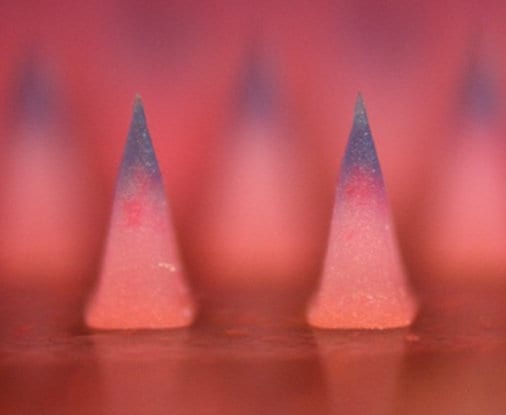
Optical microscopy image of silk/PAA microneedle array encapsulating AF647-OVA (blue) in silk tips, and AF555-OVA (red) in PAA pedestals. Image by P. C. DeMuth/F. C. Frankel
The use of needles to administer vaccines is painful, inconvenient, and poses safety risks due to injury and the spread of disease. Further, immunization costs are inflated by the need for refrigeration of vaccines prior to injection. Scientists from the Massachusetts Institute of Technology have developed an approach for the rapid delivery of vaccines from ‘microneedle’ skin-patches which painlessly embed microscopic vaccine-loaded implants into the skin.
These ‘vaccine-depots’ reside in the skin and continually release immune-stimulatory agents for several weeks. The ability to tune the duration of vaccine exposure in the body allows these skin-patch vaccines to mimic the time-course of natural infections, while targeting vaccines to the skin, a tissue which naturally detects invading pathogens. In mice, this approach generated more potent immune responses than injection and vaccine patches stabilized their dried vaccine cargos for more than 2 months at room temperature, thus eliminating the costs and distribution limitations of cold storage.
The research was recently published in the journal Advanced Healthcare Materials.














